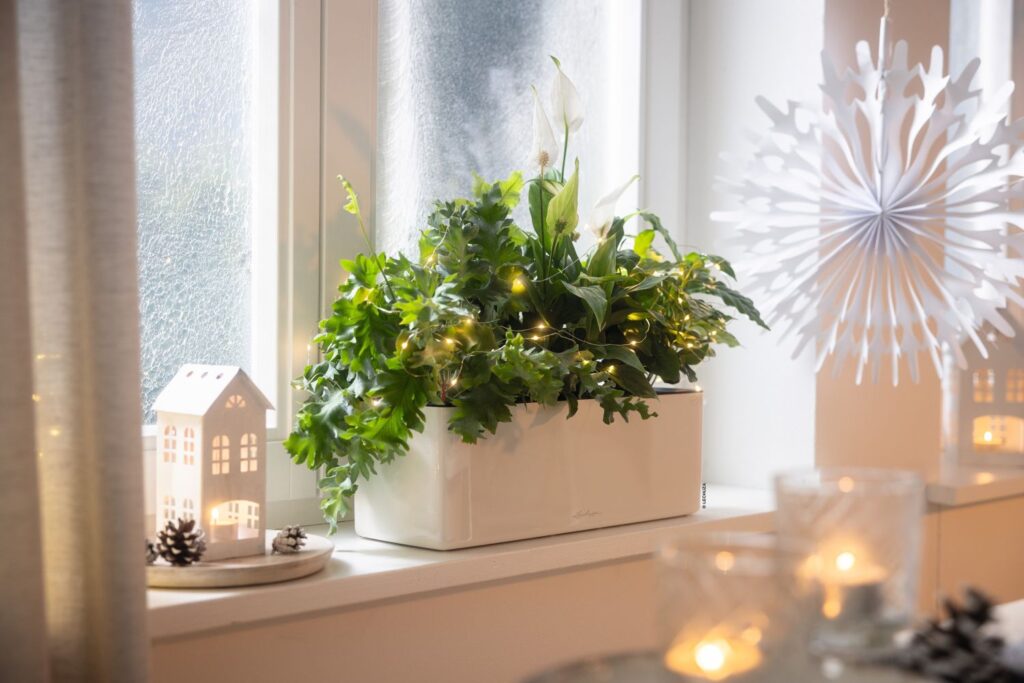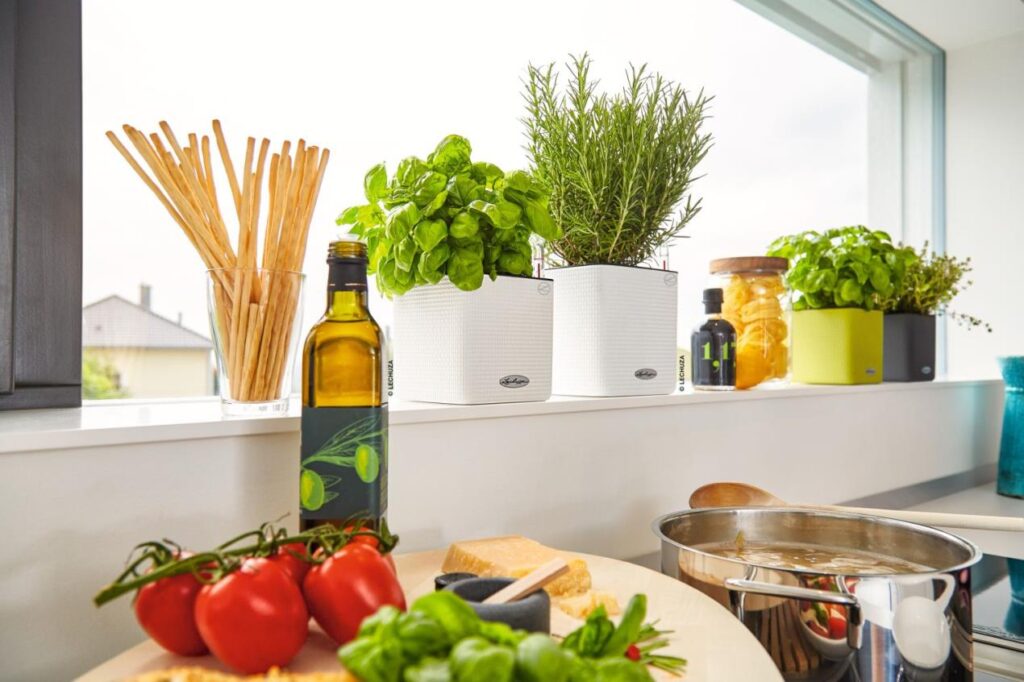
Autumn is a rewarding season for gardeners, who are harvesting apples, damsons, squashes, corn and rosehips, whilst tidying up their prized plots before winter sets in. For houseplants afficionados it’s no less interesting, as this is not only the season for repotting plants which have outgrown their old containers, but also for reseeding their herb gardens and decorating the home with winter flowering beauties.
The award-winning self-watering planter specialists at LECHUZA are here to help you keep your home and garden bounteous and blooming for the rest of the year and beyond into 2026.
Ensure your green space is looking is its very best in 2026 by planting spring-flowering bulbs in autumn through December. Earlier blooming flowers like snowdrops, crocus and daffodils should be planted earlier in the autumn, whilst tulip bulbs are best left until November or December. Hyacinths can be planted throughout October, or any time prior to the first frost. This is also a good moment to plant perennials such as primulas into woodlands and flower borders.
Planting bulbs at this time of year enables the plants to put down roots and go through the beneficial winter chill before emerging triumphant in spring to beautify our lives and the world around us. All bulbs can be planted very successfully into containers, either individually for a single perfect hyacinth, or in charming clumps of either a single variety or colourful mixture. The more the merrier! Choose the bowl-shaped CUBETO Stone 30 or 40 (RRP from 24.29) planter or square BACINO Cottage (pictured, RRP from £34.19) for a spectacular riot of colour in the spring.
Winter Crops
Salad isn’t just for summer and you can still enjoy fast-growing, leafy home-grown produce such as lettuce, rocket chives and basil throughout the autumn and into winter if you keep their containers on a sunny windowsill or light-flooded conservatory. Hardy crops such as spinach, winter carrots, radishes and kale will even thrive outdoors in cooler conditions, whilst you can bed down sets of garlic and onions for a spring harvest.

Allotment-favourites such as broad beans can also be planted from October onwards and will help deliver nitrogen to your soil as well as tasty and nutritious produce to your table. Autumn is also the time of year to plant fruit bushes, rhubarb crowns and hedgerow whips so they can become established over winter and enjoy a head start in the new year. LECHUZA VEGGIE PON (RRP from £16.99 for 6L) offers the ideal growing conditions for any sort of food plant.
If you’re more into cultivating an urban jungle than digging for Britain in the great outdoors, you can use plants to glorious effect when styling your home for autumn and then Christmas. The quintessential winter flowering plant is the poinsettia, aptly nicknamed the ‘Christmas Star’. The poinsettia’s story begins in its native Mexico, but its symbolism has l spread across the globe to become an integral part of the festive season. They make thoughtful gifts and are a traditional decorative plant, accompanying us throughout Advent.
The name Christmas Star comes from the characteristic star-like shape of the bracts and the timing of their appearance, as they burst into bloom just in time for Christmas. Combining decorative beauty with deep symbolic meaning, poinsettias are now available in a variety of beautiful colours alongside their traditional red, including Barbie and blush pink, cream, yellow, apricot, white and delightful variegated leaves. LECHUZA CUBE (RRP from £19.79) and DELTINI (pictured below in rose gold, RRP from £19.79) self-watering planters offer the perfect home for these sensational plants.
Christmas cacti have also migrated to Europe from the Americas. They are relatively easy to grow and, like poinsettias, thrive in bright rather than blazing full sun and prefer warmer temperatures. Also like their Christmas Star cousins they can start off miniature-sized and will grow much larger with the right care. Whilst poinsettias in their native lands can grow into large, robust trees, however, a Christmas cactus is able reach a maximum size of about two feet wide and a foot tall in a couple of years. This means they will outgrow their pots and be ripe for repotting at least once in their lifespan. Choose LECHUZA CACTUS PON (RRP from £7.99 for 3L) and a sturdy round PURO (RRP: £17.99) planter for the best results.
Expert repotting for exceptional results
This is also the best time of year for caretaking your plants, rehoming those which have outgrown their pots or which require fresh growing media to keep looking their best. Renowned amongst the houseplant community and professional growers for its superior ability to deliver nutrients and hold moisture whilst also offering excellent drainage capacity without irritating gnats or other insects, LECHUZA PON is the ideal substrate for all your (re)potting needs, with specialist mixes for cacti and succulents, orchids, citrus trees and palms.
Take advantage of a 6% discount on LECHUZA’s professional quality growing substrates until the end of October using the PONPR promo code in the LECHUZA online shop: https://thelechuza.co.uk/product-category/potting-mixes/
Shop the full range at thelechuza.co.uk or follow the team on Instagram at @lechuza.co.uk
Notes to editors
Did you know…?
- LECHUZA planters are fully recyclable
- All LECHUZA planter liners are made from 100% recycled* material
- LECHUZA processes 990 tonnes of recycled* plastic each year
- LECHUZA reuses 100% of plastic waste in production
- As part of LECHUZA’s sustainability efforts, over 70% of the water used in production comes from cisterns.
- LECHUZA is a multi-award-winning brand including the 2019 Design Award, Reddot Award winners 2018 and German Design Award winner 2019.
* post-industrial material
MORE INFORMATION ABOUT LECHUZA
Kimberley Hornby George – kimberley@hornbygeorgepr.com – Tel 07851 610573
